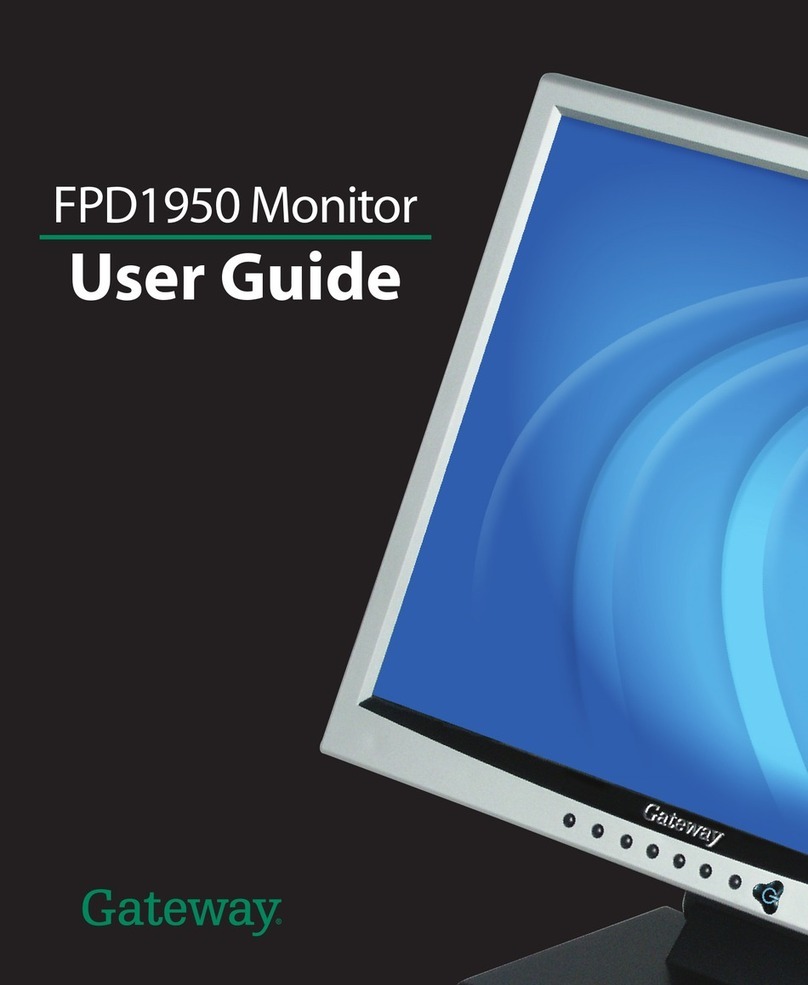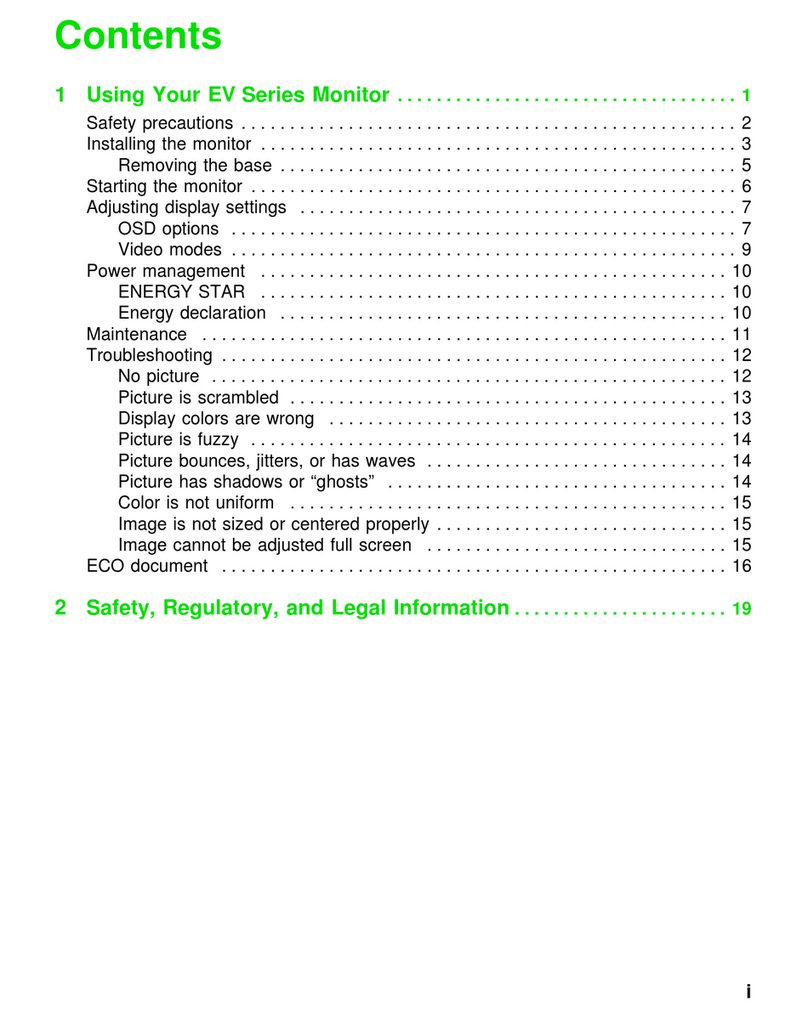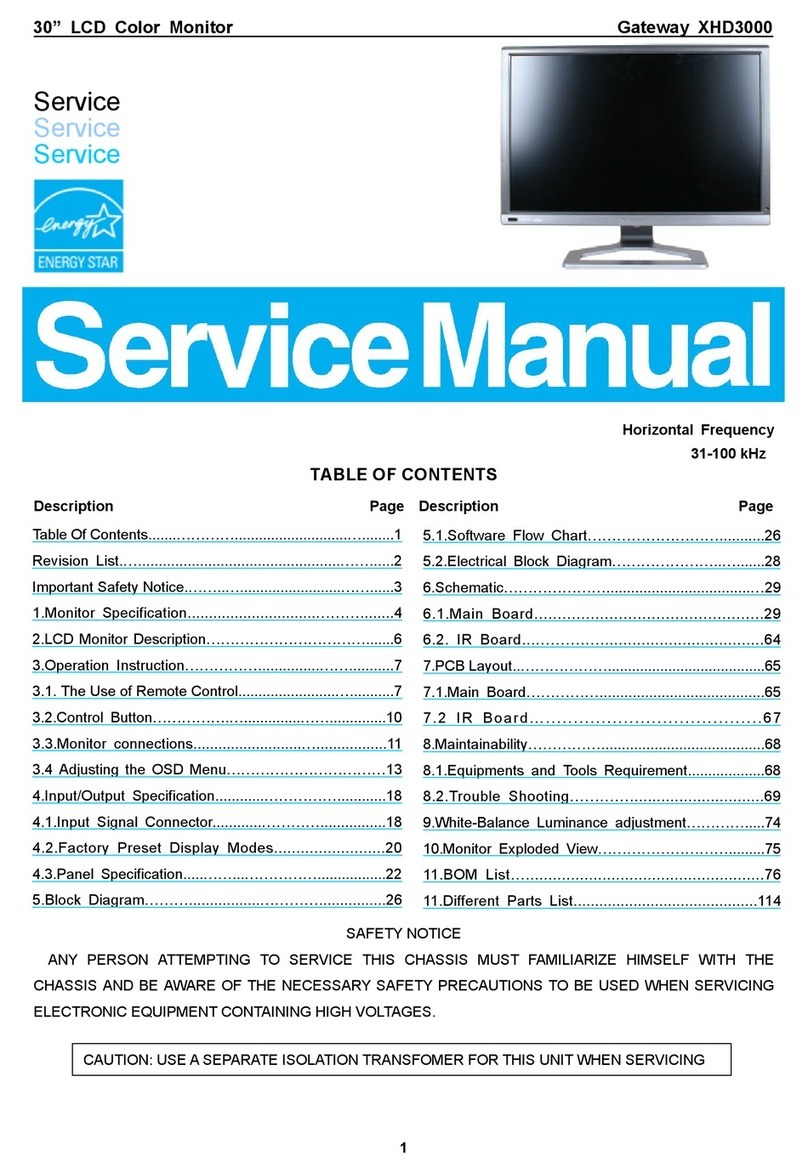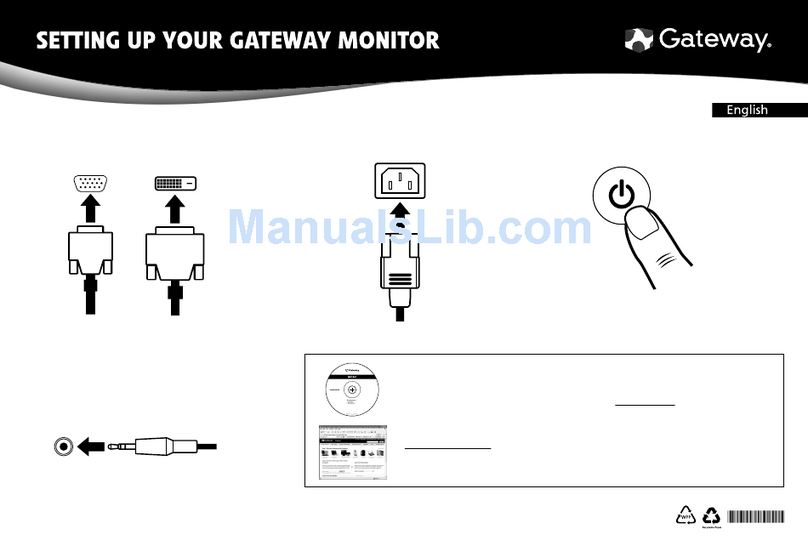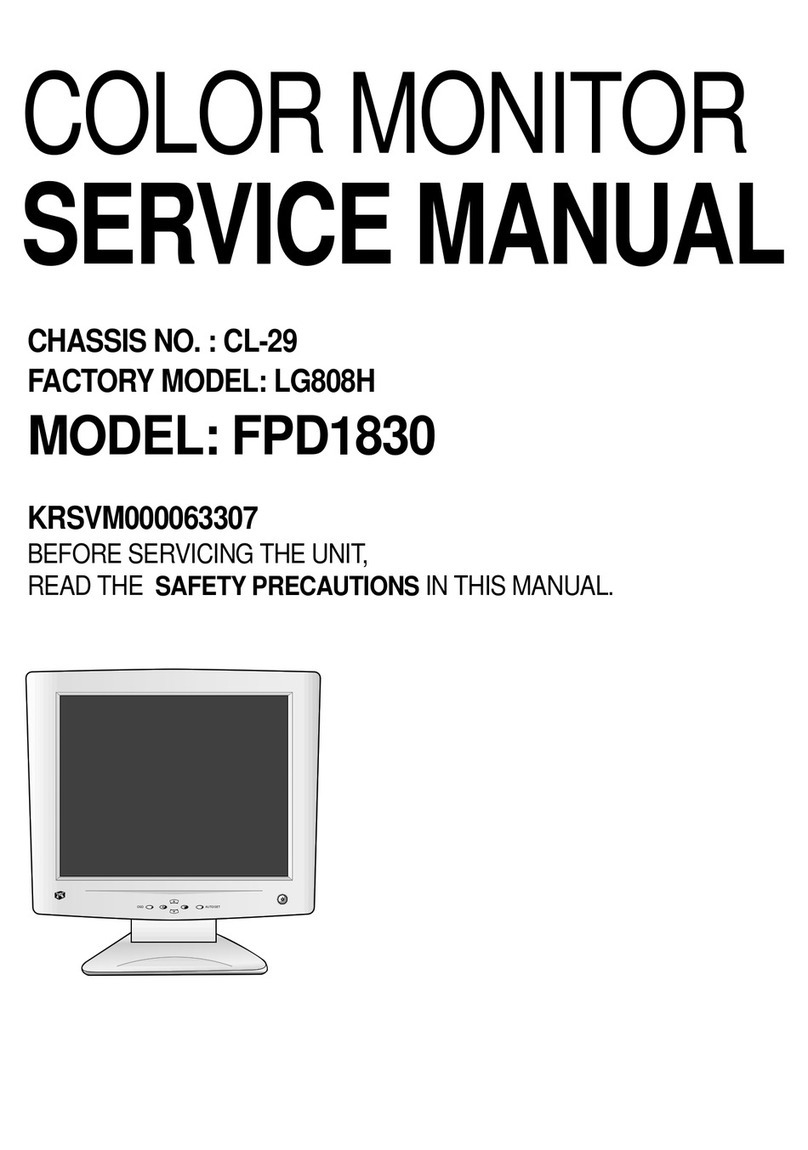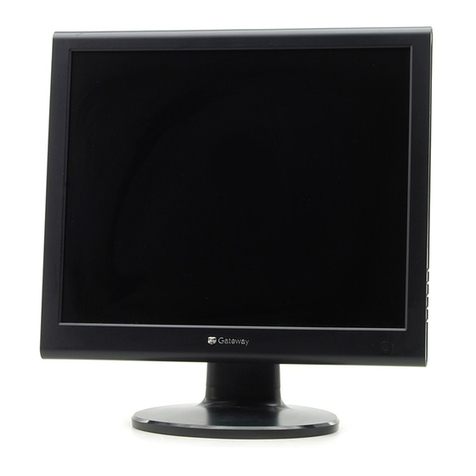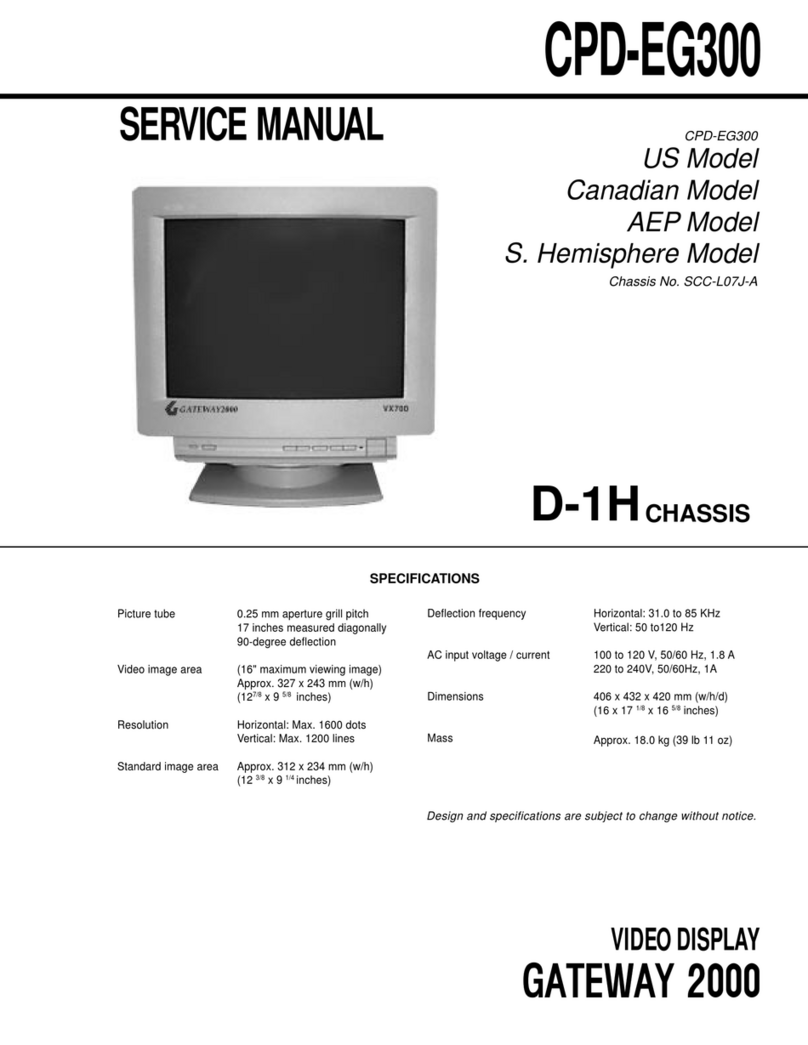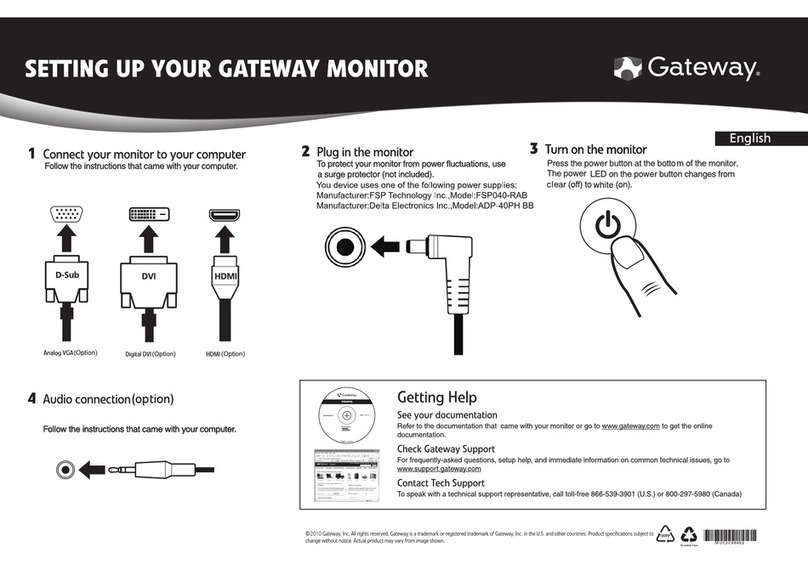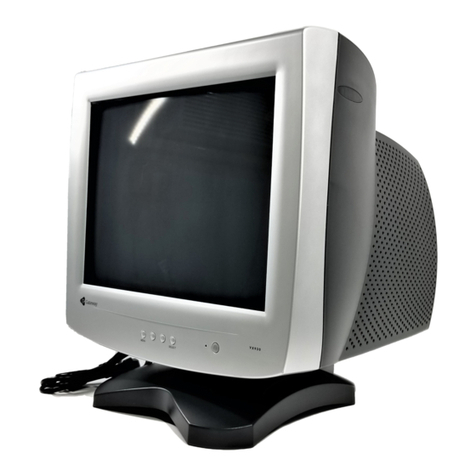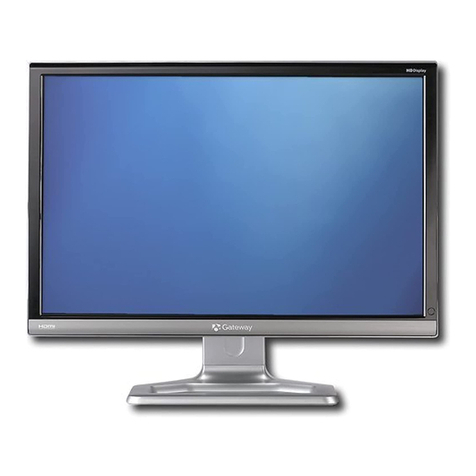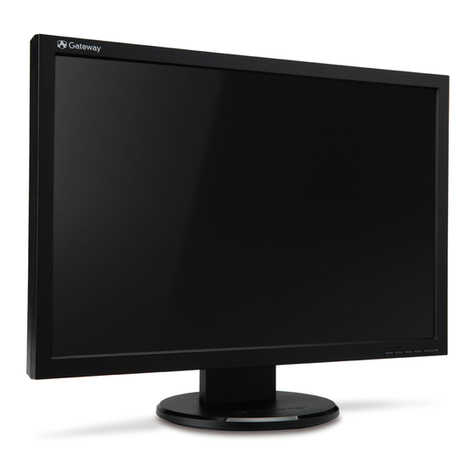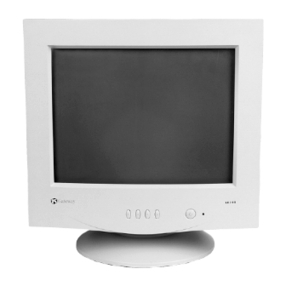
SPECIFICATION FOR GTW-P50M503 PLASMA DISPLAY VER1.0
2-4
2.4.3Horizontal Size (Max.) Mode 1~31ðover full-scan
Vertical Size (Max.) Mode 1~31ðover full-scan
2.4.4Maximum Brightness Level: Timing Mode 1
a. 100% center block white
pattern (mosaic) More than 25FL
(while pressing recall button to set default brightness)
b. Raster background
Less than 0.4FL
(while pressing recall button to set default brightness)
2.5. Operation:
Main unit button Main power switch (power ON /OFF)
Power ON/OFF
Input Select (RGB -> DVI run in cycle)
Menu key -,+
Adjustment -,+
IR Remote Control Power on/off
MUTE
Display
Input Select (same as Main unit button)
Volume -,+
Wide:
Analog RGB input: 4:3/16:9
Menu -,+
Adjustment -,+
RECALL
PIP, SOURCE, SWAP, POSITION (this mode is not use)
USE FOR TV MODE: (this mode is not use)
V-CHIP/SET
FAV.CH, FAV.SET, QV, CCD, MTS, CH LOCK,
SLEEP TIMER,
Number Select, CH ▲▼
DIRECT KEY:
POWER ON, POWER OFF, RGB, DVI
TV(this mode is not use)
AV1(this mode is not use)
AV2(this mode is not use)
COMPONENT1/2(this mode is not use)
2.5.1Adjustable Items:
Analog RGB input
PICTURE:
Input Source, Brightness, Contrast, V-center, V-size,
H-position, H-width, Color Temperature, Clock Phase
SOUND:(this mode is not use)
Bass, Treble, Surround, BBE, Bass Extension, Volume,
INNER SPK, Audio Output
PIP/POP: (no function under this input)
TV: (this mode is not use)
OTHER:
OSD Timeout, OSD Brightness, OSD Background, Sleep,
OSD Language, Power Save, Power On Sequence, Reset
DVI input
PICTURE:
Input Source, Brightness, Contrast, V-center, V-size, H-
position, H-width, Color Temperature
SOUND: (same as Analog RGB input)
PIP/POP; (no function under this input)
TV; (this mode is not use)
OTHER:
OSD Timeout, OSD Brightness, OSD Background, Sleep,
Power Save, Power On Sequence, Reset




